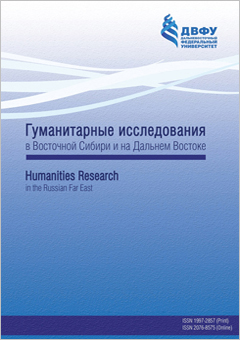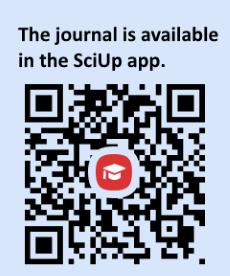Places of action in Konjaku-monogatari-shū: the provinces of Japan, their natives, governors, and guests
DOI:
https://doi.org/10.24866/1997-2857/2024-1/5-17Keywords:
Japan, setsuwa tales, Konjaku-monogatari-shū, toponyms, geography, local traditionsAbstract
Among collections of Japanese setsuwa tales, Konjaku-monogatari-shū of the XIIth century stands out not only for its volume, but also for its breadth of geographical coverage. Memorable incidents from the life of the Japanese are placed here in a global context, while at the same time each of the Japanese tales has local characteristics. The article examines the functions of toponyms in the structure of the tales and ways of linking the narrative to places on the map of Japan and traces the connection between each of these ways and the type of source to which a tale goes back. Focusing on several Japanese provinces, the authors analyze the contexts in which their names are mentioned, searching for the possible unity of motives in the tales united not just by the place of action, but also by a toponym. The appendix to the article contains a Russian translation of the tale, which mentions the region of Echizen (26–17).
Downloads
References
Бабкова М.В. Наставник созерцания Догэн: жизнь и сочинения. М.: Кругъ, 2016.
Кондзяку моногатари-сю: (Собрание стародавних повестей). Токио: Иванами, 1993‒1999.
Кондзяку моногатари-сю: (Собрание стародавних повестей). URL: http://yatanavi.org/text/k_konjaku/index.html
Собрание стародавних повестей 今昔物語集, «Кондзяку моногатари-сю» в истории японской религиозно-философской мысли // Сайт Н.Н. Трубниковой. URL: https://trubnikovann.wixsite.com/trubnikovann/blank-czx1
Родин С.А. Представления о влиянии природных условий среды обитания на формирование характера человека в Японии: анализ содержания и бытования текстов «Дзинкокуки» и «Син дзинкокуки» // Вопросы философии. 2020. № 1. С. 168–179.
Симонова-Гудзенко Е.К. Япония VII–IX веков. Формы описания пространства и их историческая интерпретация. М.: АСТ; Восток–Запад, 2005.
Суровень Д.А. Покорение земель северо-восточной Японии режимом Ямато (по материалам «Куни-но мияцуко хонки» [«Реестра наместников провинций»]) // Известия высших учебных заведений. Поволжский регион. Гуманитарные науки. 2011. № 2. С. 3–15.
Tomohiro, Y., 2021. Literacy in early modern Echizen and Wakasa regions. In: Rubinger, R. ed., 2021. A social history of literacy in Japan. London; New York: Anthem Press, pp. 99–126.
Xiaolong Huang, 2021. Authority and competition: Shingon Buddhist monastic communities in medieval Japanese regional society. Japanese Journal of Religious Studies, Vol. 48, no. 1, pp. 103–123.
Downloads
Published
Issue
Section
License
Copyright (c) 2024 Надежда Николаевна Трубникова, Майя Владимировна Бабкова

This work is licensed under a Creative Commons Attribution-NonCommercial-NoDerivatives 4.0 International License.














